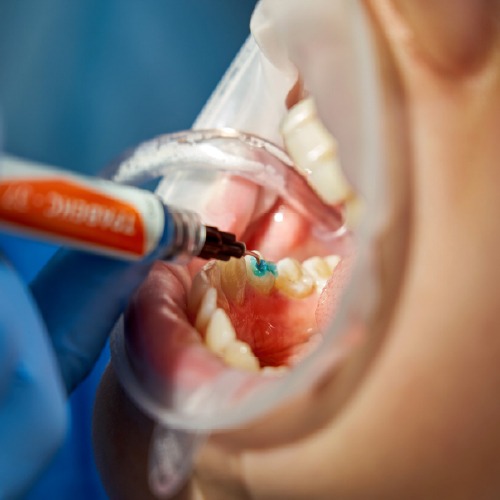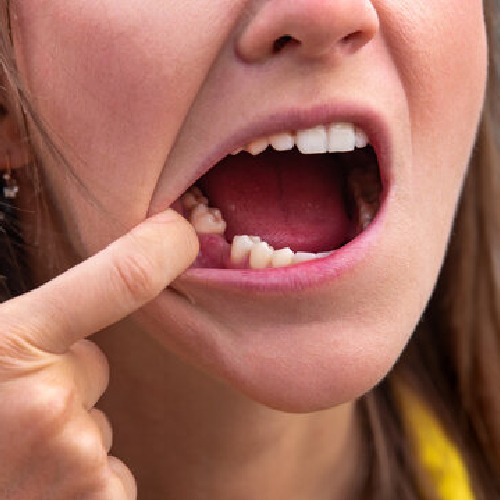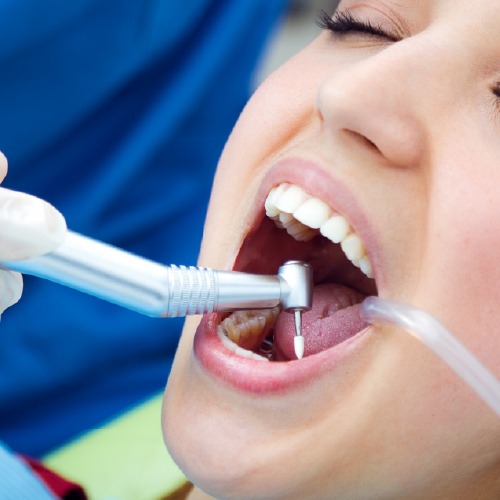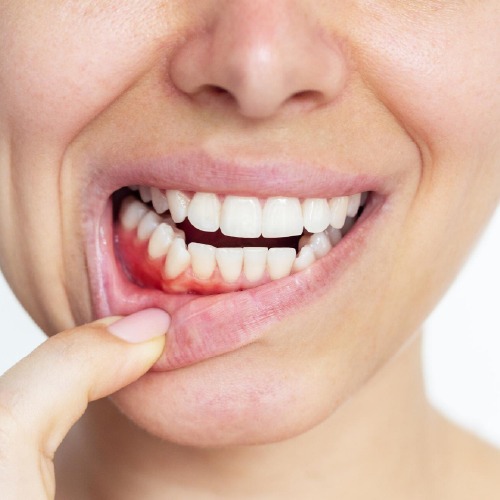When most people hear the phrase deep cleaning teeth, their first thought is usually: “Oh no, that sounds painful!” The truth? It’s not as scary as it sounds. In fact, this treatment is one of the best things you can do if gum disease has already started causing trouble. Think of it as giving your teeth and gums a fresh start almost like hitting the reset button on your oral health.
So let’s walk through everything you need to know about deep cleaning teeth: what it is, how it’s different from your regular dental cleanings, the signs you might need one, and what actually happens during the teeth cleaning process. I’ll also sprinkle in some real-world tips, because the more you understand it, the less intimidating it feels.
What exactly is deep cleaning teeth?
Deep cleaning teeth, also known as scaling and root planing, is a special non-surgical treatment designed to fight back against gum disease. Instead of just cleaning the visible parts of your teeth, it goes beneath the gumline where harmful bacteria and hardened tartar love to hide.
Why is that important? Because the bacteria lurking below your gums are the biggest culprits behind gum inflammation, bleeding, and even bone loss around the teeth. If left untreated, this can eventually lead to loose teeth or worse, losing them altogether.
Now, don’t panic. Catching these issues early and treating them with deep cleaning can stop the disease from getting worse. It’s like putting up a strong wall before the damage spreads too far.
How Is Deep cleaning teeth Different from a Regular Cleaning?
This is one of the most common questions people ask: “Is deep cleaning teeth better than a regular cleaning?”
The answer: neither is “better”; they simply serve different purposes.
- Regular cleaning (prophylaxis): This is the routine cleaning you should get every six months. It’s preventive care, meant for people with healthy gums. The hygienist focuses on removing plaque on teeth and tartar above the gumline, polishing your teeth, and reducing the risk of gingivitis.
- Deep cleaning (scaling and root planing): This is more of a treatment. It’s recommended when gum disease is already present and the pockets around your teeth are deeper than 4 mm. The goal here isn’t just to make your smile shiny; it’s to remove infection, smooth the tooth roots, and give your gums a chance to reattach.
So if your gums are healthy, you only need regular cleanings. But if gum disease has started, that’s when deep cleaning becomes essential.
Signs You Might Need a Deep Cleaning of Your Teeth
Sometimes gum disease sneaks up without obvious pain. That’s why dentists check your gum pockets carefully during exams. But here are some red flags you might notice at home:
- Bad breath (halitosis) that just won’t go away, no matter how much you brush or rinse.
- Gums that are red, swollen, or sore to the touch.
- Bleeding gums every time you brush or floss, a classic early warning sign.
- Receding gums that make your teeth look longer than before.
- Loose teeth or ones that feel like they’ve shifted position.
- Deep periodontal pockets of 4 mm or more, usually detected by your dentist.
- Bone loss that shows up on dental X-rays.
If you’re nodding along to more than one of these, it’s definitely time to talk to your dentist or periodontist. Starting treatment sooner can protect not just your gums but also the bone that holds your teeth in place.
Step by Step: What Actually Happens During a Cleaning Appointment
A lot of people feel nervous about the teeth cleaning process because they picture loud tools, scraping sounds, and discomfort. But once you understand the steps, it feels much less intimidating. Here’s what usually happens:
- The quick exam
Your hygienist starts by checking your gums and teeth with a small mirror. They’re looking for early signs of decay, gum disease, or other concerns. If something major shows up, the dentist steps in before continuing. - Removing plaque on teeth and tartar
With the help of a scaler, the hygienist gently scrapes away plaque on teeth and hardened tartar. You might hear scraping noises, but that’s completely normal. Daily brushing and flossing keep plaque under control, but tartar is stubborn only a professional can remove it. - Polishing with gritty toothpaste
Once tartar is gone, your teeth are polished with a high-powered brush and a gritty toothpaste. It may feel a little rough, but it’s safe, and it leaves your teeth super smooth and shiny. - Flossing like a pro
Even if you floss daily, nothing beats professional flossing. Your hygienist can reach tricky spots, remove debris you’ve missed, and check for areas where your gums bleed. Bleeding is often an early sign of gum issues. - Rinsing it all away
You’ll rinse to wash away leftover particles. Many dentists use a fluoride rinse for an added layer of protection. - The fluoride treatment
Finally, your hygienist applies fluoride to strengthen enamel and help prevent cavities. It might be a foamy gel, a paste, or a varnish brushed directly onto teeth. With varnish, you can even eat and drink right after the appointment.

Myths and Fears About Deep Cleaning Teeth
Let’s clear up a few common myths, because fear often comes from misunderstanding:
- “It’s painful.”
Not really. Most patients feel little more than mild pressure or scraping. If your gums are sensitive, numbing gel or local anesthesia can be used. - “It will make my teeth loose.”
Actually, untreated gum disease is what makes teeth loose. Deep cleaning helps stop that process and stabilizes your teeth. - “It’s just like regular cleaning, so why pay more?”
Deep cleaning goes below the gumline, where standard cleanings can’t reach. It’s a completely different level of care.
What to Expect After a Deep Cleaning Teeth
It’s normal to have a little tenderness or sensitivity for a day or two after the procedure. Your gums might feel slightly sore, and your teeth could be sensitive to hot or cold. This is temporary and usually eases quickly.
To help your gums heal:
- Brush gently with a soft-bristled toothbrush.
- Rinse with warm salt water to reduce irritation.
- Avoid very hard or crunchy foods for the first 24 hours.
- Stick to your follow-up visits, your dentist will likely check your healing within a few weeks.
The reward? Healthier gums, fresher breath, and a much lower risk of losing teeth to gum disease.
Why Regular Cleanings Still Matter
Even if you’ve had deep cleaning teeth, that doesn’t mean you’re “done” forever. Gum disease can return if you don’t keep up with regular dental visits and good home care. Think of deep cleaning as step one, and routine maintenance as step two.
Professional cleanings every six months are your best defense against future teeth problems. During those visits, your hygienist can remove new tartar, catch issues early, and keep your mouth in great shape.
Daily Habits to Prevent Teeth Problems
Here are some simple things you can do at home to keep your gums and teeth strong:
- Brush twice a day with fluoride toothpaste.
- Floss daily, yes, it really matters!
- Drink water often to wash away food particles.
- Limit sugary snacks and drinks, since sugar feeds bacteria.
- Don’t skip dental checkups, even if everything “feels fine.”
These small habits go a long way in preventing teeth problems like cavities, gum disease, and bad breath.
Final Thoughts
At the end of the day, whether you need a routine cleaning or a deep cleaning teeth, the goal is the same: keeping your smile healthy and your gums strong. A regular teeth cleaning process helps prevent issues before they start, while deep cleaning steps in when gum disease has already taken hold. Both play an essential role in protecting you from serious teeth problems down the road.
So don’t think of dental cleanings as just another chore on your to-do list. They’re a real investment in your long-term health. With every appointment, you’re not just polishing your teeth; you’re protecting your smile, your confidence, and even your overall well-being.
If you’ve noticed any of the warning signs, don’t wait. Talk to your dentist and see if a deep cleaning could be the fresh start your gums need. Because the sooner you take action, the brighter and healthier your future smile will be.
References:
https://my.clevelandclinic.org/health/treatments/23983-tooth-scaling-and-root-planing



